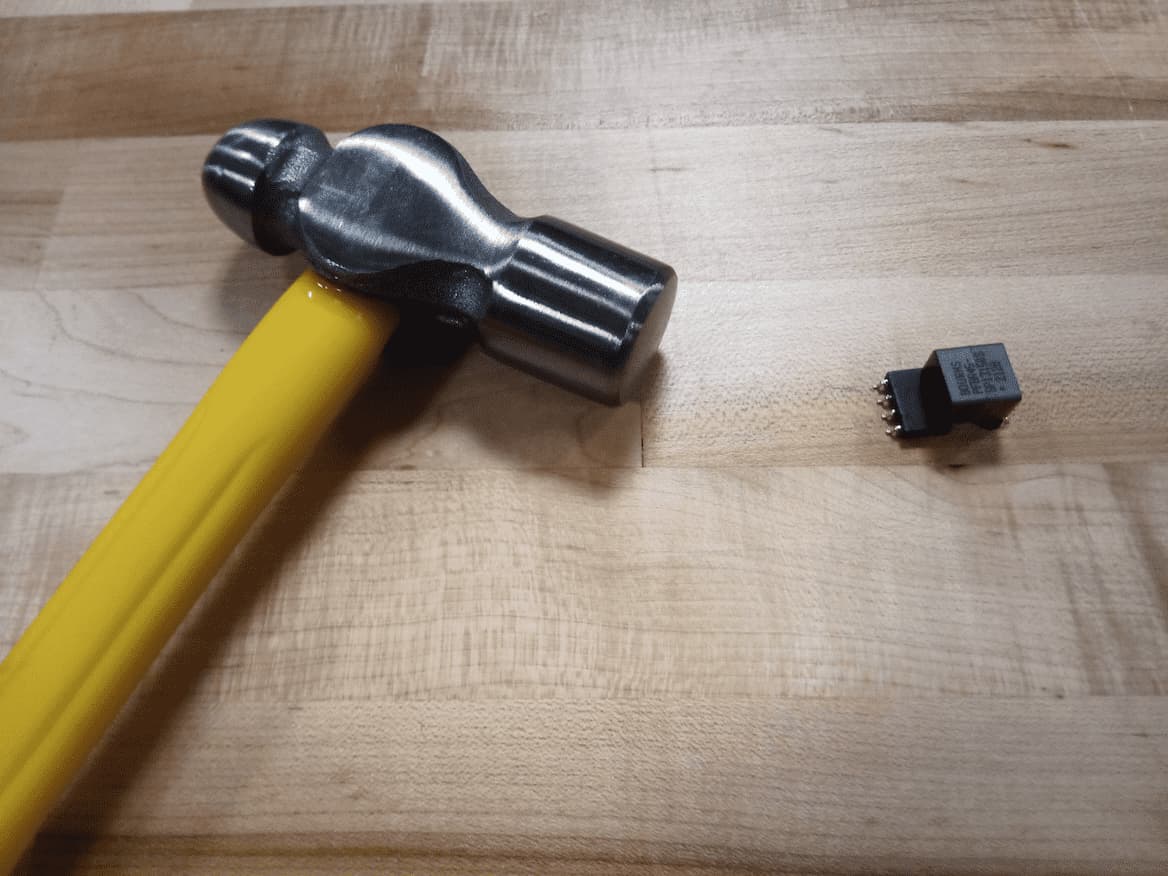How do you go about experimenting with flyback transformers. I had someone contact me with that question. It sounds like a reasonable question to have a conversation about.
I have a wide view of the things you can do as an experiment for this element14 activity.
Here are some ideas that came to me. These are more along the lines of simple things to do.
Build Something Simple
1. This is basic "experiment" idea where you could could build a simple flyback converter using any of the flyback transformers I send you as an official participant. I would be willing to  work with you if you need components that Newark and/or Farnell sells. You can message me or place your BOM in your application.
work with you if you need components that Newark and/or Farnell sells. You can message me or place your BOM in your application.
The Hammer Test....No! But Please dive into the construction of Flyback Transformers
2. How about the hammer test? Okay, I probably should not be suggesting something so crude as walloping one of these babies (though it sounds fun). But I think devising any method that would allow you to take a close look at the construction of a flyback transformer would be good to do and write about.
Examine Voltage Transformation and/or Isolation
3. Examining two basic characteristics of flyback transformers: voltage transformation and circuit isolation would be some good experiments to do.
Selecting a Flyback Transformer
4. How do you select a flyback transformer for a circuit.
Testing a Flyback Transformer
5. Another thing I think could be done is experimenting with the testing flyback transformers. Of course, this depends on the flyback you are going to test. Something to play around with to start your experimentation
So the above things are the basic stuff that would be game for this activity. Perhaps other folks have some suggestions for simple experiments that someone who hasn't played around with flybacks could do.
What about something a bit more advanced?
1. build a flyback converter
2. build a flyback transformer driver
3. The main difference between a flyback transformer and a regular transformer is that a flyback transformer is designed to store energy in its magnetic circuit, i.e., it functions like a pure inductor, whereas a regular transformer is designed to transfer energy from its primary to secondary and to minimize stored energy. So, experimentally comparing a flyback with a regular transformer.would be a series of experiments.
4. Overheating can lead to the failure of a flyback transformer. Experiment with temperature as the variable.
5. Flyback transformers can cause EMI issues, low efficiency, and thermal overstress.. Experiment with these things.
6. Experiment with efficiency
So, those my general ideas to help people think and/or plan what they might do if they become a participant in the Experimenting with Flyback Transformer Challenge.
If you haven't enrolled in the program, you can go here to enroll.

Top Comments